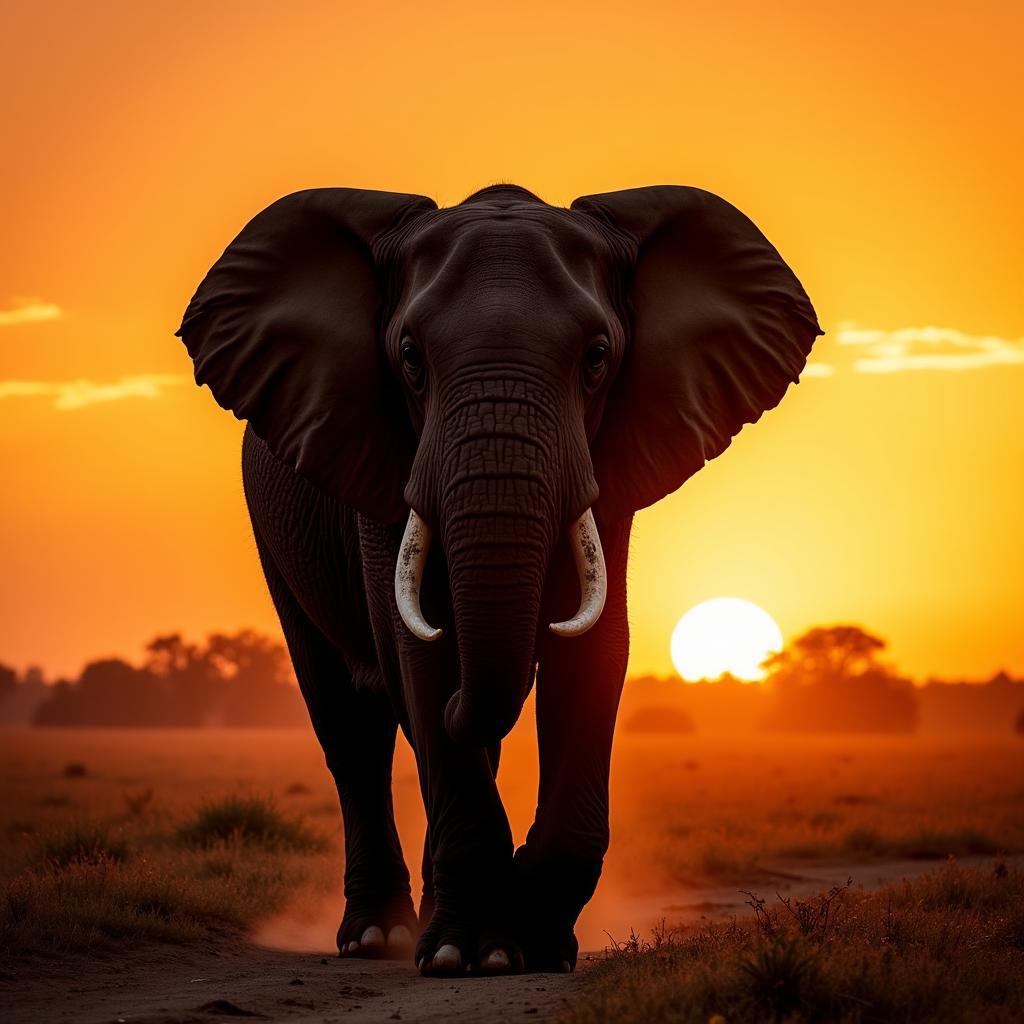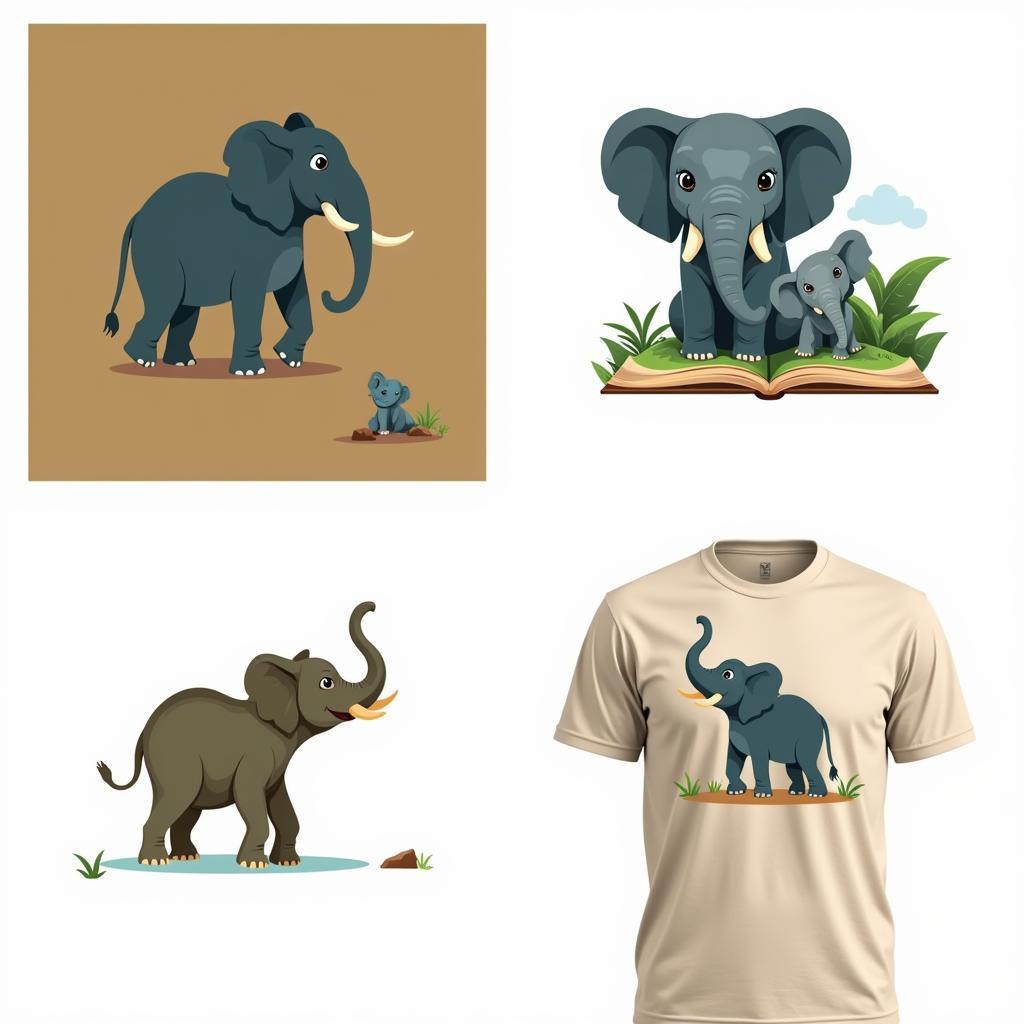The Striking Beauty of the African Elephant Face in Black and White
The African elephant face, captured in stark black and white, reveals a depth of character and wisdom rarely seen in the animal kingdom. These iconic images, whether of a lone bull or a nurturing matriarch, symbolize the raw power and gentle spirit of Africa’s largest land mammal. From the intricate wrinkles around their eyes to the imposing tusks that frame their face, every detail tells a story of survival, resilience, and deep familial bonds.
Unveiling the Majesty: African Elephant Face Features
African elephant faces aren’t just beautiful; they’re incredibly expressive and functional. Their large ears, for example, aren’t just for hearing; they also act as radiators, helping to regulate body temperature. The trunk, a marvel of evolutionary engineering, is a multi-purpose tool used for everything from drinking and breathing to communicating and caressing. And those magnificent tusks? They’re not just for show; they’re essential for digging, foraging, and defense.
The complex social structure of elephants is reflected in their facial expressions. A lowered trunk can signal submission, while a flared ear accompanied by a rumbling growl is a clear warning to stay back. The wrinkles, often more pronounced in older elephants, are a testament to a life lived in the wild, facing both triumphs and challenges. They are symbols of wisdom and experience, passed down through generations of elephant families.
Why Black and White Photography Captures the Essence of the African Elephant
Black and white photography strips away distractions, allowing us to focus on the essential elements of the African elephant face. It emphasizes the textures and contrasts, highlighting the wrinkles, the shadows, and the sheer magnificence of these creatures. By removing color, the image becomes timeless, capturing a sense of ancient wisdom and the enduring spirit of these giants.
Think about the classic wildlife photographs that have become iconic. Many of them are in black and white, capturing a raw emotion and connection that color images sometimes miss. African elephant group black and white photography allows us to connect with the elephant on a deeper level, appreciating their strength and vulnerability in a way that transcends mere aesthetics.
The Importance of Conservation: Protecting these Gentle Giants
The future of the African elephant is uncertain. Poaching and habitat loss continue to threaten their survival. By appreciating the beauty and complexity of the African elephant face, perhaps we can be inspired to act, to protect these magnificent creatures for generations to come. African animals that represent freedom like the elephant remind us of the wild spirit of Africa, a spirit we must strive to preserve.
A large african animal like the African Elephant requires vast territories to thrive. Understanding their needs and advocating for their protection is crucial for their survival. Even something as simple as sharing powerful images, like those of an African elephant face in black and white, can raise awareness and inspire action.
Dr. Aminata Sow, a renowned wildlife conservationist, emphasizes the importance of visual storytelling: “A single photograph can capture the heart and ignite a passion for conservation. The black and white images of African elephant faces speak volumes about their wisdom and resilience, reminding us of what we stand to lose if we don’t act now.”
Conclusion: A Timeless Symbol of Africa
The African elephant face, in black and white, is more than just a beautiful image; it’s a powerful symbol of the wild heart of Africa. It speaks to us of strength, resilience, and the deep bonds of family. By understanding and appreciating these magnificent creatures, we can be inspired to protect them and ensure their survival for generations to come. Learn more about their unique skin at African elephant skin. Let the timeless beauty of the African elephant face in black and white remind us of our responsibility to protect these gentle giants.
FAQs
- Why are African elephants’ ears so large? Their large ears help them regulate their body temperature.
- What is the purpose of an elephant’s trunk? The trunk is a multi-purpose tool used for eating, drinking, breathing, communicating, and more.
- Why are African elephants poached? Their ivory tusks are highly valued in some cultures.
- What is the social structure of African elephants like? They live in complex matriarchal societies.
- How can I help protect African elephants? Support conservation organizations and spread awareness.
- What do the wrinkles on an African elephant’s face signify? They are a testament to a long life lived in the wild.
- Where can I find African elephant HD android wallpapers? Check out online resources and wallpaper apps.
Need More Information?
Explore other related articles on our website about African wildlife, conservation efforts, and the cultural significance of these majestic animals.
For any support or information related to wildlife conservation in Africa, please contact us: Phone: +255768904061, Email: kaka.mag@gmail.com or visit our office at Mbarali DC Mawindi, Kangaga, Tanzania. Our customer service team is available 24/7.




